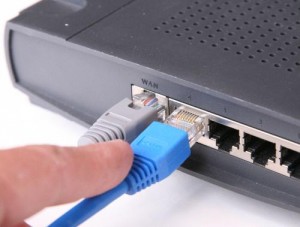
The economic stimulus package approved by Congress in February included $7.2 billion to help bring broadband internet access to more citizens. It also required the Federal Communications Commission to create a national broadband plan–an undertaking with important implications for schools.
The stimulus authorized the National Telecommunications and Information Administration (NTIA) to implement the Broadband Technology Opportunities Program (BTOP), which is a $4.7 billion, one-time competitive matching grants program. The funds are intended to expand broadband services to underserved areas, improve broadband access for public safety agencies, stimulate the economy, and create jobs. NTIA is implementing the program along side the Department of Agriculture’s Rural Utilities Services, which received $2.5 billion for broadband loans, loan guarantees, and grants.
The funding came on the heels of a report from the Benton Foundation calling for robust, affordable, and universal broadband access to the internet, because, according to what the foundation calls “persuasive research,” universal and affordable broadband is “the key to our nation’s citizens reaching for–and achieving–the American Dream.”
Universal, affordable broadband access is critical to ensuring that students of all ages can take classes from home, for example–and it’s necessary for students to take advantage of online video instruction while at home.
In the first of three rounds of broadband stimulus grants, in which federal officials were making available $4 billion, officials received seven times that amount in requests. Many of these 2,200 applications included colleges and universities as project partners, and among the initial grant winners were projects involving the University of Maine, North Georgia College and State University, and the University of New Mexico.
Heading the agency charged with developing a national broadband strategy is Julius Genochowski, whom President Obama tapped in March to lead the Federal Communications Commission. Genachowski, a friend of Obama’s from their days at Harvard Law School, brought a corporate technology background and inside-the-Beltway experience to the FCC. An advisor to Obama during the president’s campaign, Genachowski had pushed for the expansion of broadband access nationwide as a key driver of economic competitiveness.
To help bring broadband to more Americans, the FCC is considering how it can leverage the e-Rate program, which provides telecommunications discounts to eligible schools and libraries. The FCC asked stakeholders in November for their thoughts on several e-Rate-related proposals, such as loosening the eligibility requirements for e-Rate-funded equipment to allow for community use of computer labs, for example.
At an agency hearing in August, educators told the FCC that the e-Rate can play a significant role in the national broadband plan–but for this to happen, commissioners must raise the program’s funding cap.
“Since the program’s second year, the [FCC] has not raised the e-Rate’s annual cap above its current $2.25 billion funding level, not even providing it an inflation adjustment,” said Sheryl Abshire, chief technology officer for the Calcasieu Parish Public Schools in Lake Charles, La. “On average, annual demand for e-Rate support outstrips the annual cap by $1.75 billion, with this year’s $3.99 billion demand mirroring the average shortfall.”
Another idea the FCC is considering came from the nation’s cable industry in early December. The plan, called Adoption Plus (A+), is a nationwide public-private partnership that would combine digital media literacy training with discounted broadband service and computers for eligible middle school students.
Education groups heralded the cable industry’s plan as a good first step, but they expressed concern about what will happen when the pilot program ends. They also noted the plan does nothing to meet the needs of households with students in elementary or high school.
As the FCC works to develop a national broadband plan by the February 2010 deadline imposed by Congress, one area it is trying to address at the same time is “net neutrality,” which would prohibit broadband providers from favoring or discriminating against certain types of internet traffic flowing over their lines.
Educators say a neutral internet is a key in developing and delivering online content to distance learners and students in rural areas, and an unregulated internet would create unfair advantages for large universities that could pay more for faster, more efficient web service.
In October, the FCC moved one step closer to establishing net-neutrality rules, voting to move forward with the rule-making process–despite opposition from the agency’s two Republican commissioners and many in the telecommunications industry who railed against “government intervention” in the broadband market.
Related links:
Obama eyes tech-savvy insider for FCC chief
Benton: Universal broadband a necessity
Stimulus aims to help close digital divide
FCC develops strategy for rural broadband
Usage-based service caps prompt broadband fairness bill
Senate confirms new chairman to lead FCC
Feds announce guidelines for rural broadband funding
Panelists to FCC: Raise e-Rate funding cap
Huge demand far exceeds broadband grants
AT&T to FCC: Gaming is not broadband, but an added service
FCC chairman: ‘Open internet’ rules are vital
Education advocates push for net neutrality
Schools make their case for broadband grants
FCC moves closer to net neutrality
Biggest net-neutrality boosters question FCC proposal
FCC discusses barriers to national broadband plan
Cable industry floats broadband plan for students
Universities play role in broadband expansion
- Arizona’s Apache Junction Unified School District Supports Innovative Teaching and Learning with New EdTech Resources - April 19, 2024
- AI Educational Partnership to Elevate Classroom Presentations, Assessments - April 18, 2024
- SME Education Foundation Expands Manufacturing and Engineering Opportunities to 15K Additional Michigan Students - April 18, 2024


